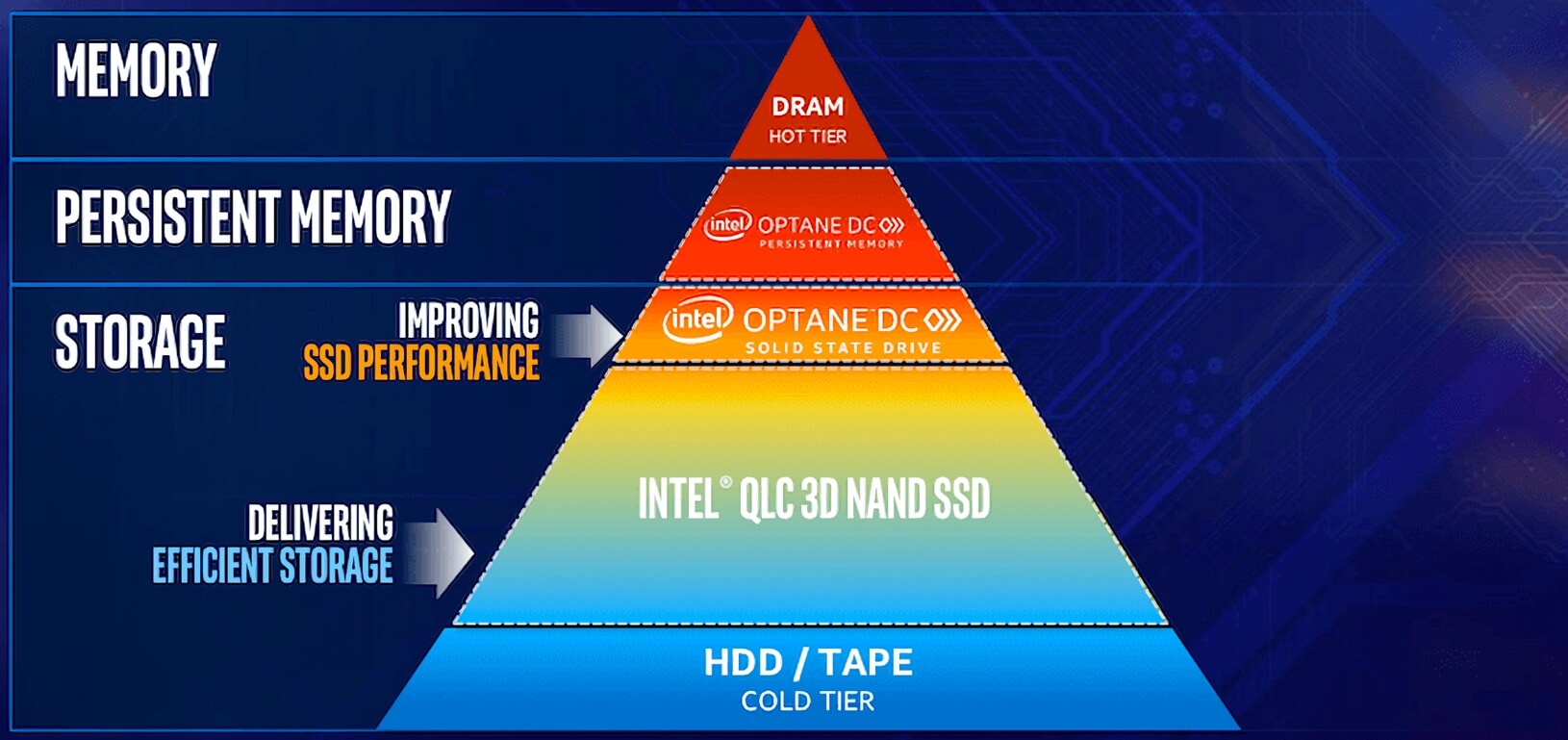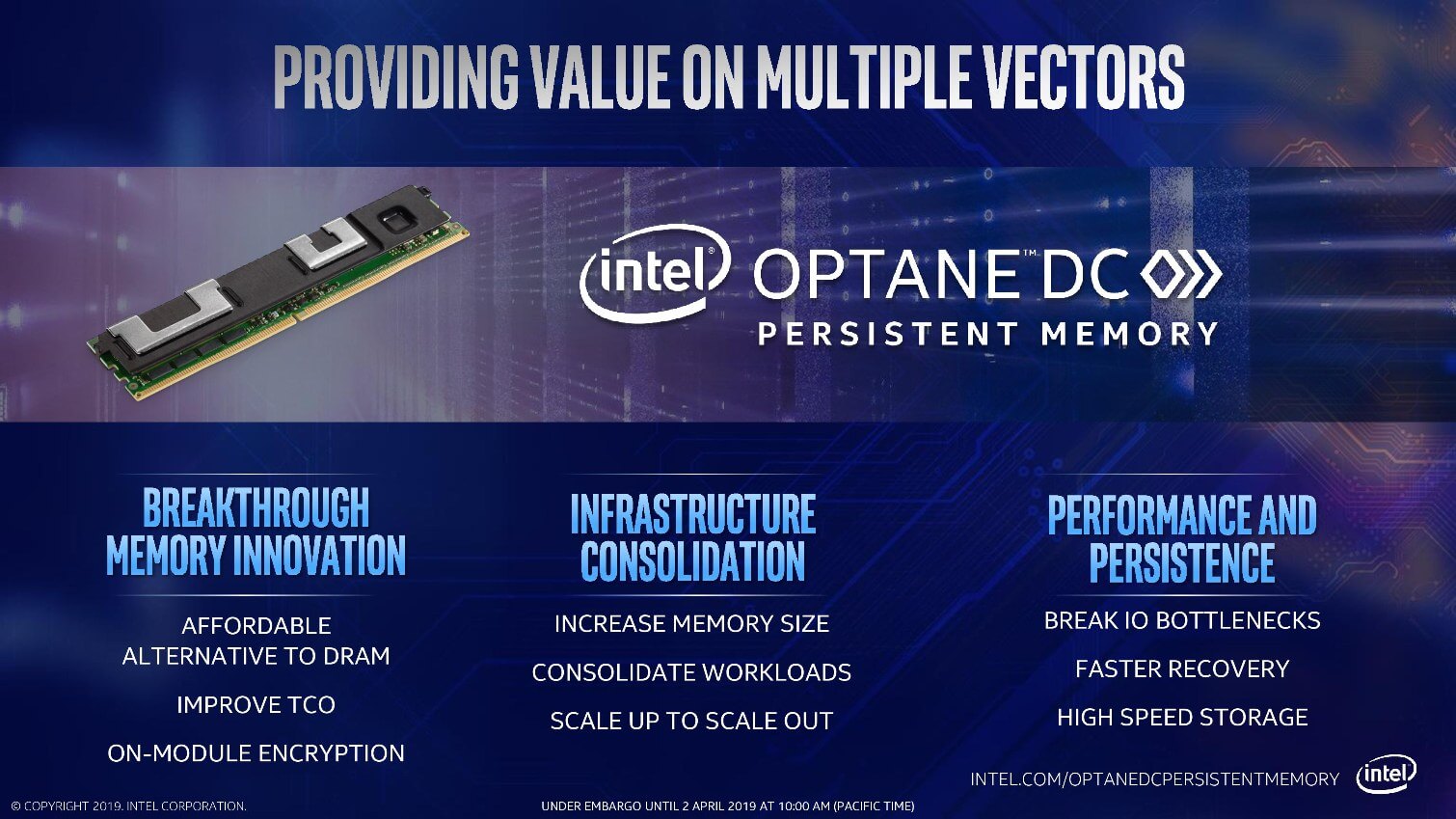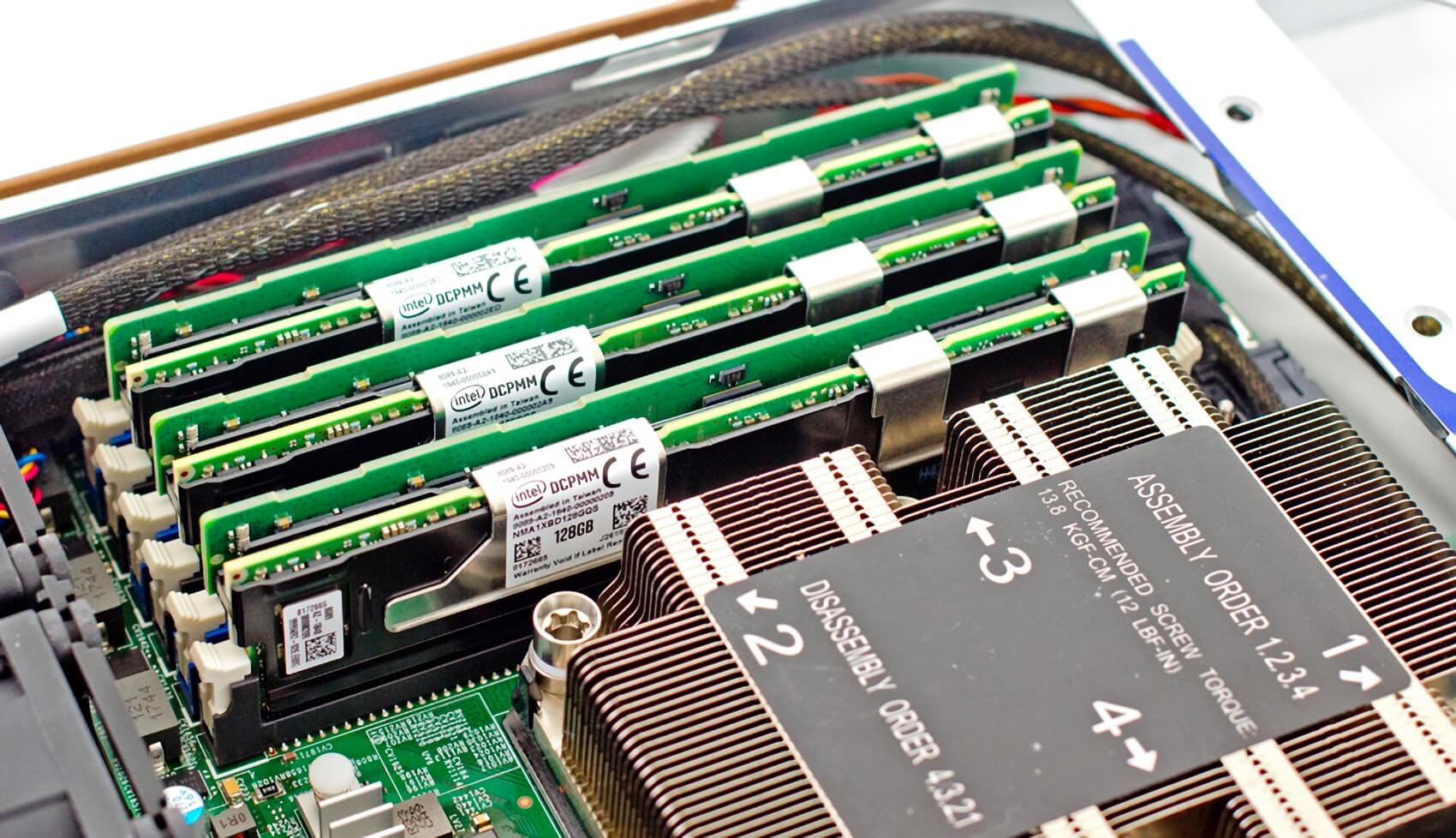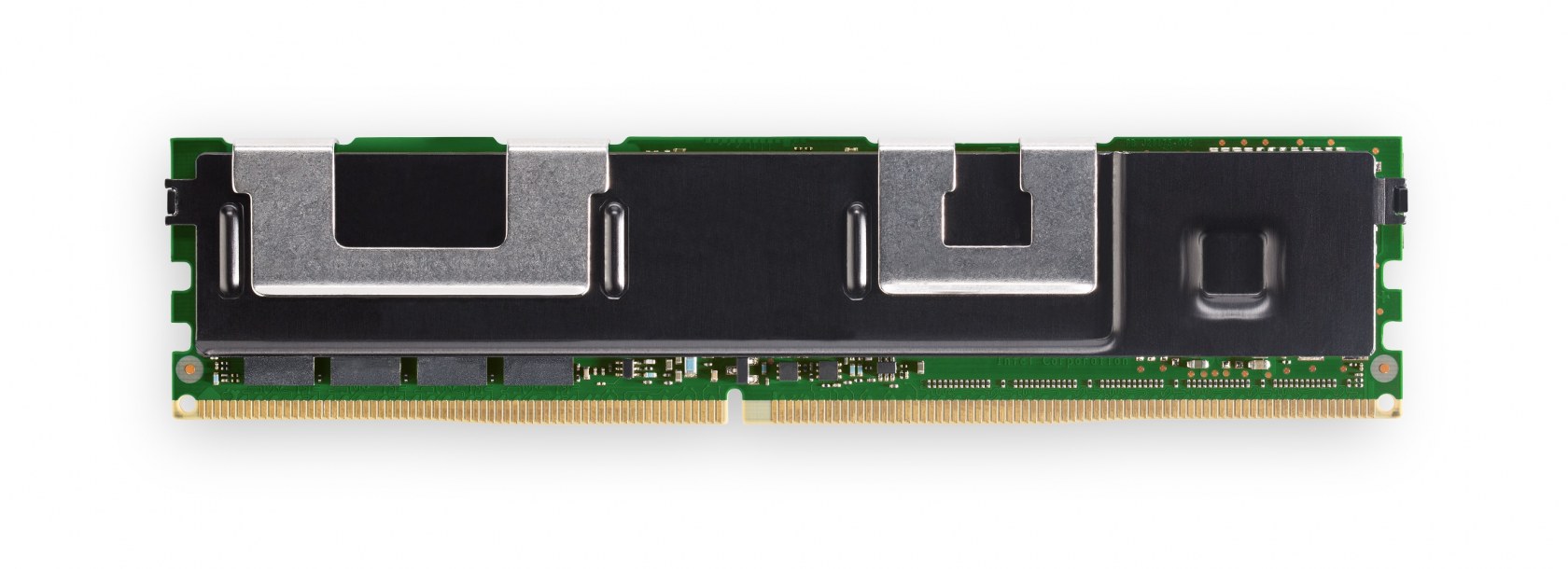Why it matters: Intel's long awaited Optane DC Persistent Memory DIMMs have arrived and they could greatly transform the way servers and data centers handle data sets. The new DIMMs will see Intel attempting to bridge the price and performance gap between DRAM and NAND and the new class of memory opens up several unique use cases.
During Intel's Data-Centric Innovation Day, the company announced the highly anticipated Optane DC Persistent Memory DIMMs. While the new Cascade Lake Xeons may be the star of the show, Intel's Optane is a key product in propelling the company forward to its data-centric future for which they've come up with a new slogan "Moving, Storing and Processing Data."
The new Optane DIMMs fit under the "store" designation as Intel is looking to leverage them to store more data affordably, while also potentially disrupting the memory market. Intel's Optane DIMMs will use 3D XPoint memory, a type of non-volatile memory that is something of an amalgamation of NAND and DRAM.

A key aspect is that 3D XPoint retains data after power loss, which means it can be addressed as both memory and storage and poises it for many new use cases.

The new Optane DIMMs will populate a standard DDR4 slot, but offer much denser storage options: capacities of 128GB, 256GB, and 512GB will be offered. That's a significant increase from the current 128GB DDR4 module. Intel is positioning the DIMMs to bridge the price and performance gap between DRAM and NAND, although pricing details aren't currently known. However, the DIMMs are expected to be priced much lower than current DDR4 DRAM.
The DIMMs will also come with an SSD-like controller as well as a proprietary memory controller designed by Intel. Optane Memory DIMMs can be used with traditional DRAM, although they will be manged much differently due to latency, bandwidth and protocol concerns. Hence the need for Cascade Lake's reworked memory controller.

Intel's new class of memory should allow servers to deploy much larger amounts of memory – into the terabytes – much closer to the CPU, in addition to traditional RAM. Intel's Optane DIMMs should in theory greatly reduce the amount of trips to storage systems. Because it's non-volatile, this should also make data loss from memory (should a server need to be rebooted or go down) almost a non-issue.
